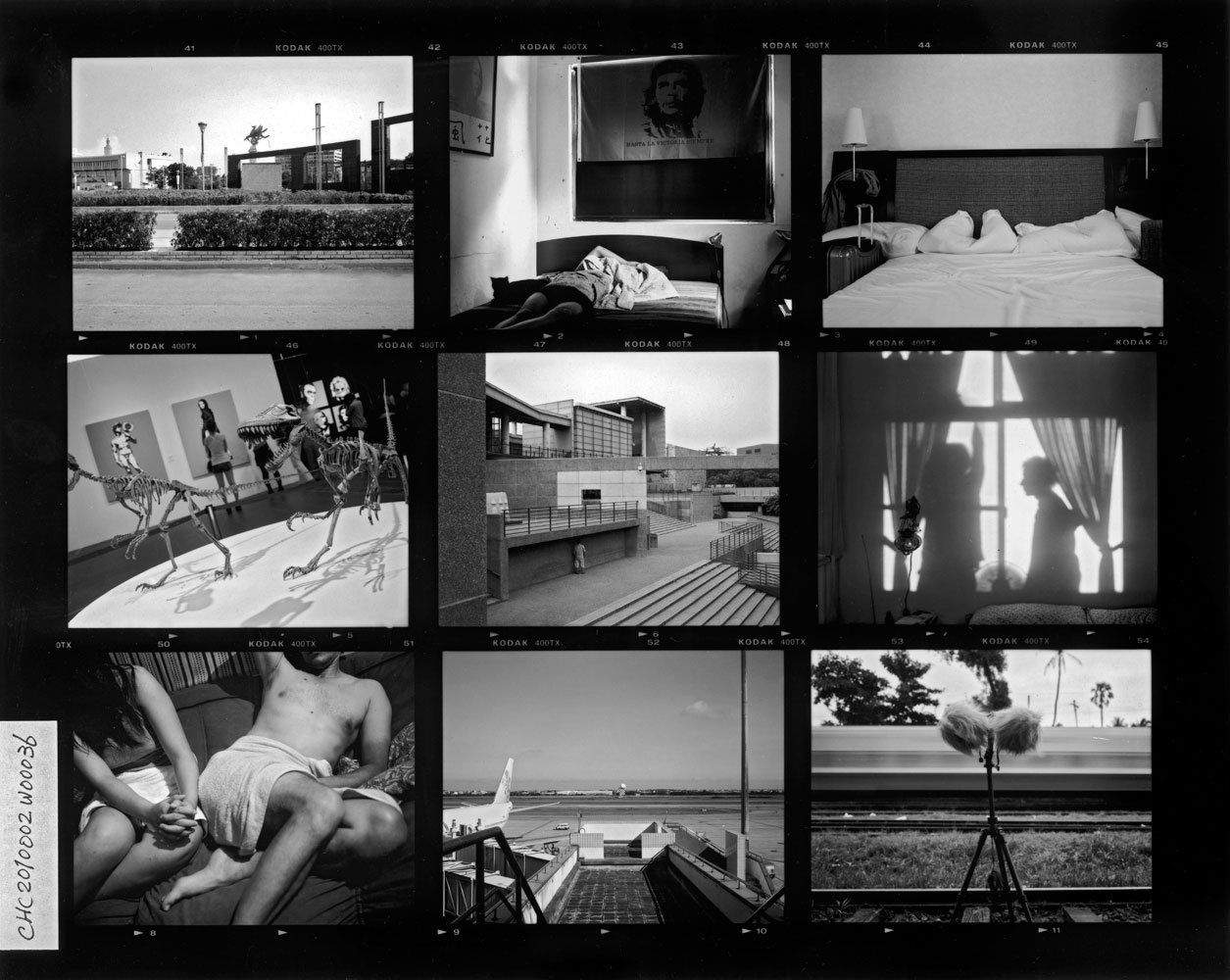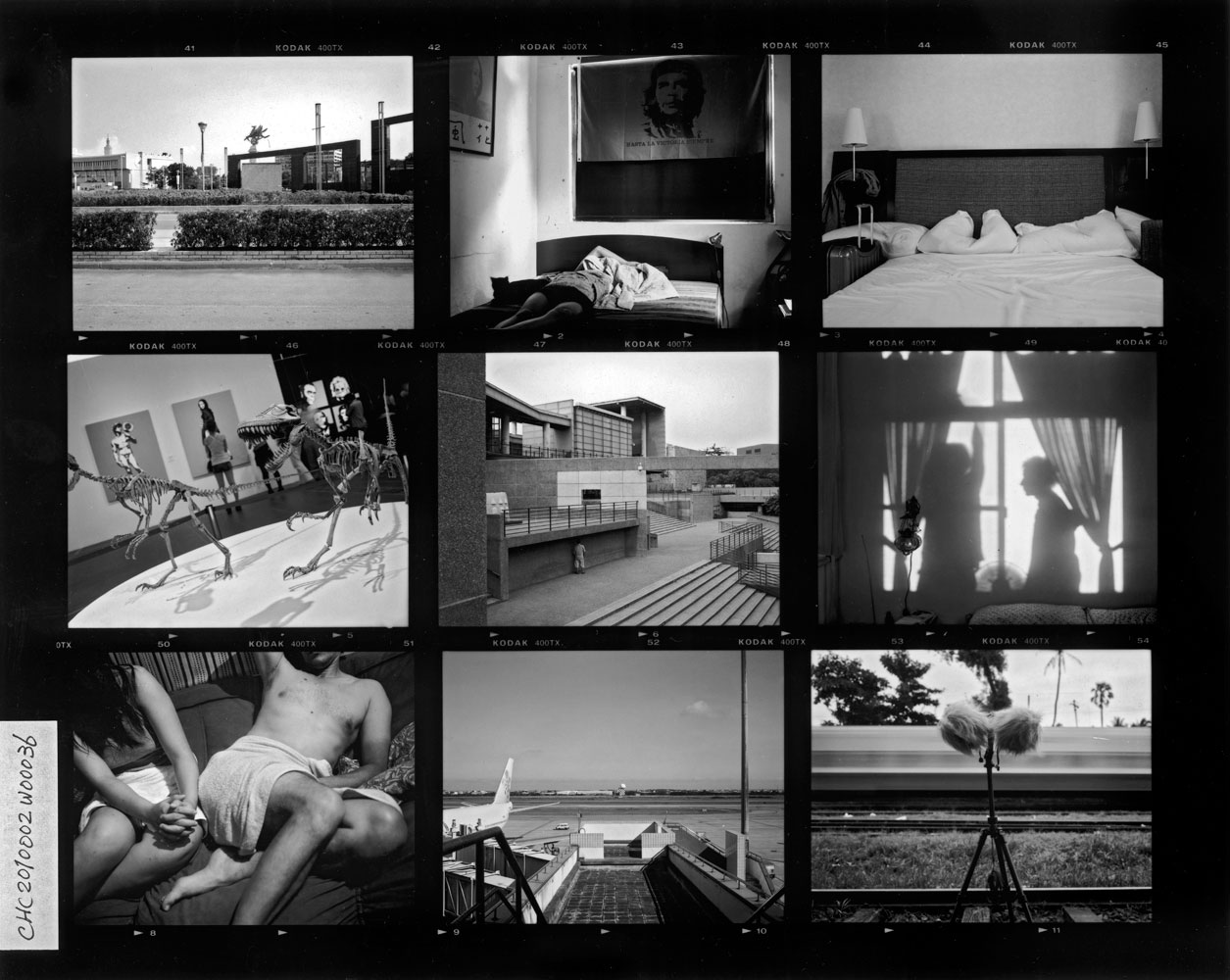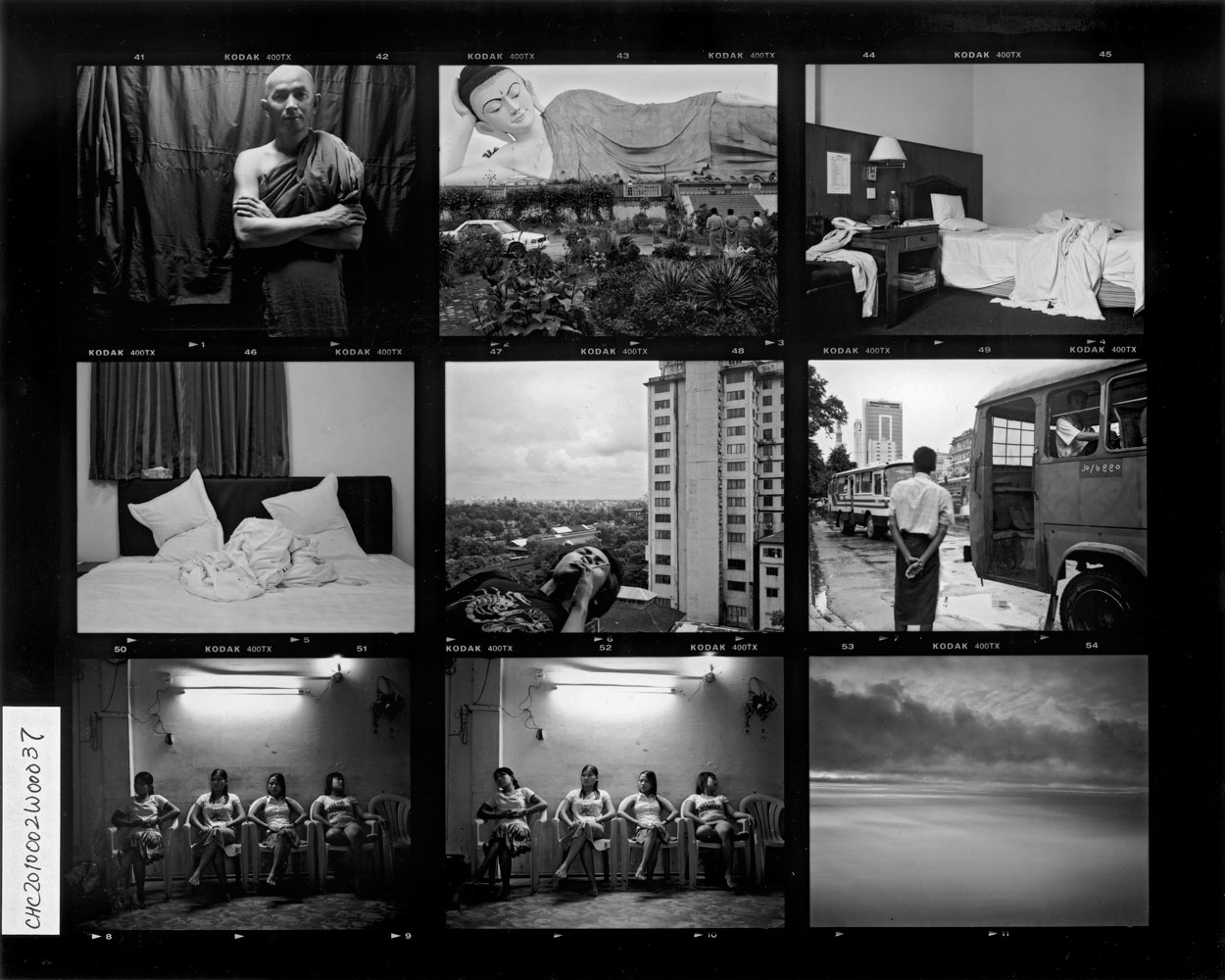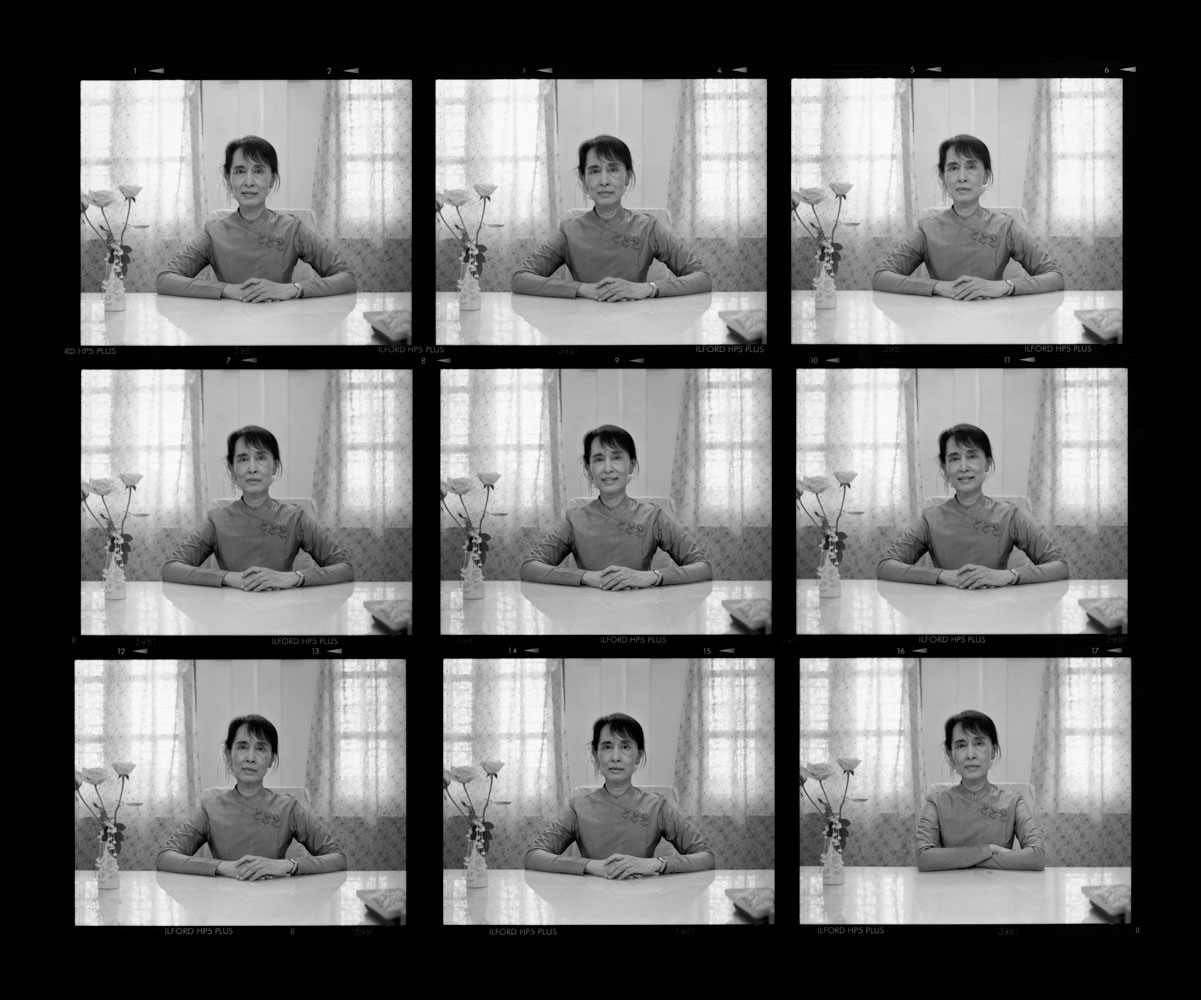
From the birth of the 35mm camera until the advent of digital photography, the contact sheet has been an inextricable, ubiquitous and essential part of the photographic process.
Magnum Contact Sheets, published this month by Thames and Hudson, offers unique insight into the working process of the celebrated agency’s photographers over the past seven decades—their approach to taking and editing their pictures, as well as their idiosyncratic relationships with the contact sheet.
The book details—and in some cases reconstructs—the back-stories behind some of the 20th century’s most iconic images. From those taken in the 1930’s by Henri Cartier-Bresson—who, the book reveals, purged all but the “Decisive Moments” from his archive —and Robert Capa’s celebrated images of the D-Day landings, to the civil rights era work of Bruce Davidson and Gilles Peress’ contact sheets that document the massacre of unarmed protesters on Bloody Sunday.
One of the most recent examples of work featured in the book is Chien-Chi Chang’s Home—a project that uses the contact sheet from a totally different perspective, premise and relationship to time, space and traditional sequence narrative.
In 2006, Chien-Chi Chang—who throughout his career had exclusively shot 35mm format film—embraced a new photographic pursuit, to work with a medium format 6×7 rangefinder and began his ongoing project, Home. For the series, Chang purposefully shoots a single frame of his subject to build 9 frame contact sheets—chronologies that record his personal life as a travelogue and visual diary. Chang describes the series as “a documentation of my life with an effort to make every frame count.”
“Waiting and wanting to take just one frame at a time goes against the traditional practice, where you tend to shoot more and then pick the right moment,” Chang says. “With this project, specifically, I don’t really care about the before and after anymore. I feel that one shot is enough. Sometimes I might feel I’m missing the so called ‘decisive moment,’ but when you accept that you are going to shoot this way, you accept that you will be missing something. If I get it, I get it, If I don’t, I don’t.”
Every time after he shoots a frame, Chang makes a quick sketch so that he has a visual reference of each frame. Initially Chang tried to construct shapes, connections and juxtapositions —using the sketches to build the relationships between the frames of each roll of film. Now the photographer has a much more relaxed approach. He says he is less obsessive and “just lets things happen.” He still makes the sketches, but more for practical purposes as a record of date and location. He notes what he finds most interesting is to compare the drawings to the final contact — our eyes are very selective Chang says, “but the lens isn’t.”
Chang shoots 60 to 70 rolls of film a year for the project. But he has been disciplined, selective, restrained and purposeful in his approach. Sometimes a roll can be shot in three or five cities and can span for two weeks. But other times, it can be shot in a few days. There are motifs that appear across multiple contact sheets from the project—hotel beds that Chang has slept in and airports are two reoccurring themes. Over the six years of the project’s development Chang’s process has been almost always to restrict himself to making only one frame at a time. However on rare occasions, a whole roll is dedicated to a single subject— the Dalai Lama in Sao Paulo, another time, Aung San Suu Kyi in Yangon. In these exceptional cases Chang only shot the 9 frames recorded and documented on the one contact sheet. It is not a contact sheet culled from many; these are the only shots.
In the age of digital photography, the traditional contact sheet is no longer the inextricable standard in terms of working process. Chang’s work offers alternative ways of using contacts as part of a more conceptual practice.
Chien-Chi Chang is a member of Magnum Photos. He was awarded the W. Eugene Smith Memorial Fund for Humanistic Photography and Visa d’Or, Visa Pour L’Image in 1999. He lives in New York and Vienna.
Magnum Contacts was published this month by Thames and Hudson.



More Must-Reads from TIME
- Donald Trump Is TIME's 2024 Person of the Year
- TIME’s Top 10 Photos of 2024
- Why Gen Z Is Drinking Less
- The Best Movies About Cooking
- Why Is Anxiety Worse at Night?
- A Head-to-Toe Guide to Treating Dry Skin
- Why Street Cats Are Taking Over Urban Neighborhoods
- Column: Jimmy Carter’s Global Legacy Was Moral Clarity
Contact us at letters@time.com